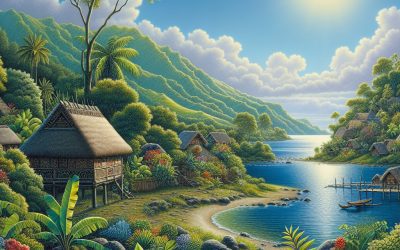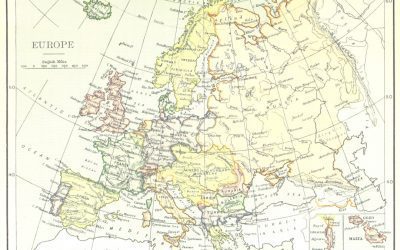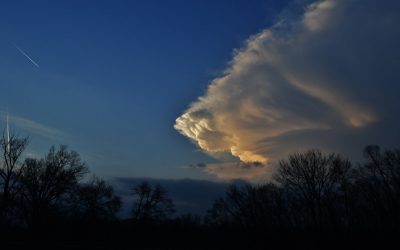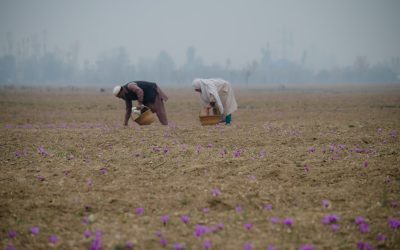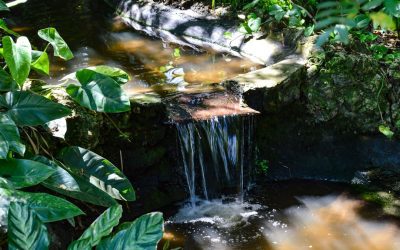Explore the World Through Geography, Natural Resources & Daily History
Clear, reliable and engaging guides that help you understand our planet — from UK geography education to global natural resources and On This Day history events.
Explore, discover, and learn about the wonders of our world! At Earth Site, we’re passionate about bringing geography, history, and science to life for curious minds of all ages. Whether you’re delving into historical events, uncovering the mysteries of the natural world, or seeking interactive resources, you’re in the right place.
Here, you can uncover the stories behind historical events, explore the natural wonders of our planet, and gain valuable insights into how the Earth’s systems shape our daily lives. From the towering peaks of mountain ranges to the far-reaching impacts of human innovation, we aim to make every topic both engaging and informative.
Start your journey of discovery with us today, and let’s make learning an adventure!
What We Cover
Earth Site brings together engaging and accessible educational content designed to help you understand the world, its history, and its natural systems.
🌍 Geography Education (UK & Worldwide)
We publish clear, easy-to-understand geography resources for students, teachers and curious learners. Our guides support geography education in the UK and cover physical geography, climate, ecosystems, population, and global development.
⛏️ Natural Resources & Environmental Geography
Explore detailed country profiles covering natural resources, mining, energy, geology and global environmental challenges. We show how nations manage minerals, water, land and ecosystems, and why these resources matter.
📅 On This Day in History
Every day has a story. Our On This Day history series features major events, anniversaries, traditions, and cultural milestones from around the world — with timelines, context, and fun facts.
TIMELINE
Samoa
Samoa (Malo Sa’oloto Tuto’atasi o Samoa (Samoan); Independent State of Samoa (English)) Capital: Apia Population (Estimated July 2012): 194,320 Area: 2,785km2 or 1,075mi2 Currency: Tala (SAT) Official Language: Samoan and English Political Information: Parliamentary Democracy and Samoan Customs Official Religion: No Official Religion(approximately 59.9% of the population are Protestant, 19.6% are Roman Catholic, 12.7% are Mormon, 4.5% are of other Christian Denominations, 3.2% follow other religious faiths and 0.1% have unspecified religious beliefs) Highest Mountain: Mount Silisili at 1,857m or 6,092ft GDP Official Exchange Rate (OER is more precise at gauging a country’s economic power) (Estimated 2011): $600 million (US$) or (GBP) GDP (OER) Per Capita (per member of the population estimated 2011): $3,000 (US$) or (GBP) GDP Purchasing Power Parity (PPP is good for gauging living conditions and the use of resources but is not as accurate as OER. This data has been calculated based on the sum value of all goods and services produced in the country valued at prices prevailing in the United States) (Estimated 2011): $1.122 billion (US$) or (GBP) GDP (PPP) Per Capita (per member of the population estimated 2011): $6,000 (US$) or (GBP) Time Zone (GMT/UTC): +13:00 Wildlife: Counties/Provinces/States: 11 districts; A’ana, Aiga-i-le-Tai, Atua, Fa’asaleleaga, Gaga’emauga, Gagaifomauga, Palauli, Satupa’itea, Tuamasaga, Va’a-o-Fonoti, Vaisigano Leaders: (Head of State) Tuiatua Tupua Tamasese Efi with Prime Minister Tuilaepa Lupesoliai Sailele Malielegaoi Additional: Gained independence from New Zealand-administered UN trusteeship on the 1st of January 1962. Sources: CIA World Fact Book, Encyclopaedia Britannica. Samoa Samoa, an enchanting archipelago located in the heart of the South Pacific, is a nation that boasts a rich tapestry of culture, history, and natural beauty. Comprising two main...
Public education campaigns on conservation
Public education campaigns play a pivotal role in fostering awareness and understanding of critical issues, particularly in the realm of conservation. These campaigns serve as a bridge between scientific knowledge and public perception, translating complex environmental concepts into accessible information that resonates with diverse audiences. By raising awareness about the importance of biodiversity, climate change, and sustainable practices, these initiatives empower individuals to make informed decisions that positively impact their surroundings. Furthermore, public education campaigns can galvanise community action, encouraging collective efforts to protect natural resources and promote sustainable living. The ripple effect of such campaigns can lead to significant behavioural changes, ultimately contributing to the preservation of ecosystems and the mitigation of environmental degradation. Moreover, the significance of public education campaigns extends beyond mere awareness; they are instrumental in shaping public policy and influencing governmental action. When communities are well-informed about environmental issues, they are more likely to advocate for policies that support conservation efforts. This grassroots advocacy can lead to increased funding for environmental initiatives, stricter regulations on pollution, and the establishment of protected areas. In essence, public education campaigns not only inform but also empower citizens to become active participants in the conservation dialogue. By fostering a sense of stewardship towards the environment, these campaigns cultivate a culture of sustainability that can endure across generations, ensuring that future populations inherit a healthier planet. Summary Public education campaigns are crucial for raising awareness and promoting understanding of conservation issues. Tailoring messages to specific target audiences is essential for effective communication and engagement. Collaborating with local communities and organisations can enhance the reach and impact of conservation education...
Population Density of Saint Vincent and the Grenadines
Saint Vincent and the Grenadines, an enchanting archipelago located in the southern Caribbean, is renowned for its stunning landscapes, vibrant culture, and rich history. Comprising the main island of Saint Vincent and a chain of smaller islands known as the Grenadines, this nation boasts a diverse ecosystem that includes lush rainforests, volcanic mountains, and pristine beaches. The capital city, Kingstown, serves as the cultural and economic hub of the country, where colonial architecture meets modern development. The islands are not only a popular tourist destination but also a significant part of the Caribbean’s socio-economic fabric, with agriculture, tourism, and fishing being the primary sectors driving the economy. The population of Saint Vincent and the Grenadines is approximately 110,000, making it one of the more densely populated nations in the Caribbean. This demographic reality is shaped by various factors, including historical migration patterns, economic opportunities, and environmental conditions. The islands’ unique geographical features contribute to both the allure and challenges of living in such a compact space. As the nation grapples with issues related to population density, it becomes increasingly important to understand the underlying factors that influence this phenomenon and its implications for the future of Saint Vincent and the Grenadines. Summary Saint Vincent and the Grenadines is a small Caribbean country with a diverse population and a rich cultural heritage. Factors contributing to population density in the country include limited land availability, economic opportunities, and historical settlement patterns. The population is unevenly distributed across the islands, with the majority residing in the main island of Saint Vincent. High population density has put pressure on infrastructure and resources, leading...
History of Saint Vincent and the Grenadines
The history of the Caribbean is deeply intertwined with the narratives of its early inhabitants, the Indigenous peoples who first settled the islands thousands of years ago. Archaeological evidence suggests that the Arawak and Carib tribes were among the earliest settlers, arriving from South America around 2000 BCE. These groups developed complex societies, engaging in agriculture, fishing, and trade. They cultivated crops such as cassava, sweet potatoes, and maize, which formed the backbone of their diet. The Arawaks were known for their peaceful nature and communal living, while the Caribs were more aggressive, often engaging in conflict with neighbouring tribes. The rich cultural practices of these Indigenous peoples included intricate pottery, vibrant storytelling, and spiritual beliefs that were closely tied to nature, reflecting their deep connection to the land. However, the arrival of European explorers in the late 15th century marked a significant turning point for these Indigenous communities. Christopher Columbus’s landing in 1492 initiated a wave of colonisation that would have devastating effects on the native populations. The introduction of new diseases, to which the Indigenous peoples had no immunity, led to catastrophic declines in their numbers. Additionally, the Europeans’ insatiable quest for land and resources resulted in violent confrontations and the eventual displacement of many Indigenous groups. By the end of the 17th century, most of the original inhabitants had either succumbed to disease or been forced into slavery or exile. This tragic loss of life and culture set the stage for a new era in the Caribbean, one dominated by European powers and marked by profound social and economic transformations. Summary Indigenous peoples inhabited the Caribbean...
Terrain and Topography of Saint Vincent and the Grenadines: mountains, valleys, and plains.
Saint Vincent and the Grenadines, an enchanting archipelago nestled in the Caribbean Sea, is a nation that boasts a rich tapestry of natural beauty and cultural heritage. Comprising the main island of Saint Vincent and a chain of smaller islands known as the Grenadines, this tropical paradise is renowned for its stunning landscapes, vibrant marine life, and warm, welcoming communities. The islands are characterised by their lush greenery, dramatic coastlines, and a plethora of outdoor activities that attract visitors from around the globe. With a population of approximately 110,000 people, the islands are a melting pot of cultures, influenced by African, European, and indigenous Carib traditions, which are reflected in their music, cuisine, and festivals. The geography...
Political Boundaries of Saint Vincent and the Grenadines: Provinces, Districts, or Historical Boundaries.
Saint Vincent and the Grenadines, an enchanting archipelago located in the Caribbean Sea, is a nation that boasts a rich tapestry of culture, history, and natural beauty. Comprising the main island of Saint Vincent and a chain of smaller islands known as the Grenadines, this country is renowned for its stunning landscapes, including lush rainforests, volcanic mountains, and pristine beaches. The capital city, Kingstown, serves as the political and economic hub of the nation, where vibrant markets and colonial architecture reflect the island’s diverse heritage. With a population of approximately 110,000 people, Saint Vincent and the Grenadines is a melting pot of cultures, influenced by African, European, and indigenous Carib traditions. This unique blend is evident in the local cuisine, music, and festivals that celebrate the island’s rich history. The geographical layout of Saint Vincent and the Grenadines plays a significant role in shaping its identity. The main island of Saint Vincent is characterised by its volcanic origin, with the majestic La Soufrière volcano being a prominent feature. The Grenadines, on the other hand, are a collection of smaller islands that vary in size and character, each offering its own unique charm. From the bustling streets of Bequia to the tranquil shores of Mustique, these islands attract tourists from around the globe seeking both adventure and relaxation. The nation’s economy is heavily reliant on tourism, agriculture, and fishing, which are all influenced by its geographical features. As we delve deeper into the historical evolution of political boundaries in this archipelago, we will uncover how these factors have shaped the governance and identity of Saint Vincent and the Grenadines. Summary...
Climate Zones of Saint Vincent and the Grenadines: Different climate regions Of Saint Vincent and the Grenadines
Saint Vincent and the Grenadines, an enchanting archipelago located in the Caribbean Sea, is renowned for its stunning natural beauty and rich cultural heritage. Comprising the main island of Saint Vincent and a chain of smaller islands known as the Grenadines, this nation is a paradise for nature lovers and adventure seekers alike. The islands are characterised by lush landscapes, pristine beaches, and vibrant marine life, making them a popular destination for tourists from around the globe. The capital city, Kingstown, serves as the cultural and economic hub of the country, where colonial architecture meets modern Caribbean life. The islands’ history is steeped in indigenous culture, colonial influences, and a blend of African, European, and East Indian traditions, which have shaped the unique identity of Saint Vincent and the Grenadines. The geographical diversity of Saint Vincent and the Grenadines contributes significantly to its climate, which varies across different regions of the islands. The archipelago is situated in a tropical zone, where climatic conditions are influenced by trade winds, ocean currents, and topographical features. This results in a variety of microclimates that support diverse ecosystems, ranging from coastal areas to mountainous regions. Understanding the different climate zones within Saint Vincent and the Grenadines is essential for appreciating its ecological richness and the lifestyle of its inhabitants. Each climate zone not only shapes the natural environment but also influences agricultural practices, tourism activities, and the overall quality of life for the local population. Summary Saint Vincent and the Grenadines is a small island country located in the Caribbean, known for its stunning natural beauty and diverse climate zones. The Tropical Rainforest...
Natural Resources of Saint Vincent and the Grenadines: Where Natural Resources are located In Saint Vincent and the Grenadines
Saint Vincent and the Grenadines, an enchanting archipelago located in the Caribbean Sea, is a nation that comprises the main island of Saint Vincent and a chain of smaller islands known as the Grenadines. This picturesque country is part of the Lesser Antilles and is situated to the west of Barbados and to the south of Saint Lucia. With a total land area of approximately 389 square kilometres, it is a relatively small nation, yet it boasts a rich tapestry of cultural heritage, natural beauty, and biodiversity. The capital city, Kingstown, serves as the political and economic hub, where colonial architecture meets vibrant markets and lively street life. The population of around 110,000 people is predominantly of African descent, with a mix of East Indian, European, and indigenous Carib influences, contributing to a diverse cultural landscape. The economy...
Cultural or Historical Sites of Saint Vincent and the Grenadines: Important Cultural Landmarks or Historical Sites In Saint Vincent and the Grenadines
Saint Vincent and the Grenadines, an enchanting archipelago located in the Caribbean Sea, is a nation that boasts a rich tapestry of culture, history, and natural beauty. Comprising the main island of Saint Vincent and a chain of smaller islands, including Bequia, Mustique, and Union Island, this nation is renowned for its stunning landscapes, vibrant marine life, and warm, welcoming communities. The capital city, Kingstown, serves as the cultural and economic hub of the country, where colonial architecture meets modern Caribbean life. Visitors are often captivated by the lush greenery, volcanic mountains, and pristine beaches that characterise the islands, making it a popular destination for those seeking both adventure and relaxation. The history of Saint Vincent and the Grenadines is as diverse as its geography. Originally inhabited by the indigenous Carib people, the islands were later colonised by European powers, including the French and British. This colonial past has left an indelible mark on the culture of the islands, evident in the local dialects, cuisine, and festivals that celebrate both African and European heritage. Today, Saint Vincent and the Grenadines is an independent nation that embraces its multicultural identity while promoting sustainable tourism and environmental conservation. The islands are not only a paradise for beach lovers but also a treasure trove for history enthusiasts and nature lovers alike. Summary Saint Vincent and the Grenadines is a stunning Caribbean destination with a rich history and natural beauty. Fort Charlotte offers breathtaking views of Kingstown and the surrounding area, making it a must-visit attraction. The Botanical Gardens are a peaceful oasis with a diverse collection of tropical plants and beautiful landscapes....
Saint Vincent and the Grenadines
Saint Vincent and the Grenadines Capital: Kingstown Population (Estimated July 2012): 103,537 Area: 389.3 km2 or 150.3 mi2 Currency: Eastern Caribbean dollar (EC$) Official Language: English Political Information: Constitutional Monarchy with a Parliamentary Democracy Official Religion: No Official Religion(approximately 75% of the population are Protestant, 13% are Roman Catholic, and 12% have other religious beliefs ) Highest Mountain: La Soufriere at 1,234m or 4,049ft GDP Official Exchange Rate (OER is more precise at gauging a country’s economic power) (Estimated 2011): $700 million (US$) or (GBP) GDP (OER) Per Capita (per member of the population estimated 2011): (US$) or (GBP) GDP Purchasing Power Parity (PPP is good for gauging living conditions and the use of resources but is not as accurate as OER. This data has been calculated based on the sum value of all goods and services produced in the country valued at prices prevailing in the United States) (Estimated 2011): $1.224 billion (US$) or (GBP) GDP (PPP) Per Capita (per member of the population estimated 2011): $11,700 (US$) or (GBP) Time Zone (GMT/UTC): -4:00 Wildlife: Counties/Provinces/States: 6 parishes; Charlotte, Grenadines, Saint Andrew, Saint David, Saint George, Saint Patrick Leaders: H.M. Queen Elizabeth II, represented by Governor-General Sir Frederick Ballantyne with Prime Minister: Ralph Gonsalves Additional: Gained independence from the U.K. on the 27th of October 1979. Sources: CIA World Fact Book, Encyclopaedia Britannica. Saint Vincent and the Grenadines Saint Vincent and the Grenadines, an enchanting archipelago located in the Caribbean Sea, is a nation that boasts a rich tapestry of culture, history, and natural beauty. Comprising the main island of Saint Vincent and a chain of smaller islands known as the Grenadines, this country...
Population Density of Saint Lucia
Saint Lucia, a picturesque island nation nestled in the eastern Caribbean, is renowned for its stunning landscapes, vibrant culture, and rich history. With its lush rainforests, volcanic beaches, and the iconic Pitons rising majestically from the sea, the island attracts tourists from around the globe. The capital city, Castries, serves as the economic and administrative hub, while the island’s diverse population contributes to a unique blend of cultural influences. The nation has a population of approximately 183,000 people, making it one of the smaller countries in the Caribbean. Despite its size, Saint Lucia boasts a complex social fabric shaped by its colonial past, African heritage, and the influence of various European settlers. The island’s geographical features and climate play a significant role in shaping its demographic patterns. With a total area of about 617 square kilometres, the distribution of the population is uneven, leading to varying levels of population density across different regions. Understanding the dynamics of population density in Saint Lucia is crucial for addressing the challenges and opportunities that arise from it. As the nation continues to develop economically and socially, the implications of population density on infrastructure, resources, and overall quality of life become increasingly significant. This article delves into the concept of population density, its influencing factors in Saint Lucia, and the broader implications for the island’s future. Summary Saint Lucia is a small island nation in the Caribbean with a diverse population and rich cultural heritage. Population density refers to the number of people living per square kilometre and is influenced by factors such as geography, climate, and economic opportunities. In Saint Lucia, population...
History of Saint Lucia
Before the arrival of European powers, the Caribbean was a vibrant tapestry of indigenous cultures and societies. The region was primarily inhabited by the Arawak and Carib peoples, who had established complex social structures and engaged in agriculture, fishing, and trade. The Arawaks, known for their peaceful nature, cultivated crops such as cassava, maize, and sweet potatoes, while the Caribs were more warlike and often engaged in conflict with neighbouring tribes. These indigenous groups had a profound understanding of their environment, utilising the rich biodiversity of the islands to sustain their communities. Their spiritual beliefs were deeply intertwined with nature, and they held ceremonies that celebrated the cycles of life and the spirits of their ancestors. The social organisation of these pre-colonial societies was intricate, with leadership often based on consensus and communal decision-making. The Arawaks lived in large villages governed by chiefs known as caciques, who played a crucial role in maintaining harmony and order within their communities. Trade networks flourished among the islands, facilitating the exchange of goods, ideas, and cultural practices. The arrival of Europeans in the late 15th century would dramatically alter this landscape, leading to the decline of these indigenous populations through disease, warfare, and enslavement. The rich cultural heritage of the Caribbean’s first inhabitants would be overshadowed by the forces of colonisation, yet their legacy continues to influence the region’s identity today. Summary Pre-Colonial Era: Barbados was inhabited by the Arawak and Carib people before the arrival of the Europeans. European Colonization: The Portuguese were the first Europeans to discover Barbados in 1536, followed by the English in 1625 who established a permanent...
